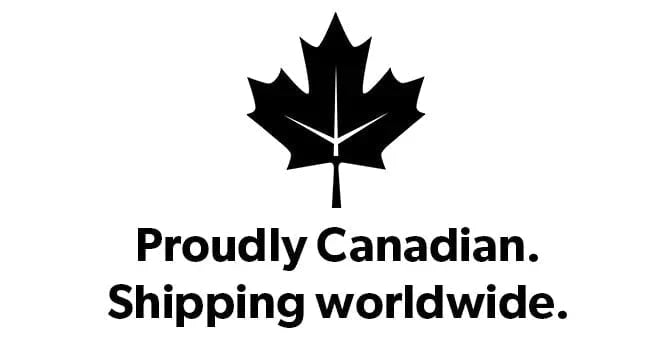Bauer Senior Goalie Pant Shell
- 9 left in stock
Free Shipping Over $200

Fast Easy Returns

Best Price Promise

Shipping Limited to Canada
The Bauer Senior Goalie Pant Shell is designed with 420 denier nylon, and an 800 denier nylon abrasion-resistant hip overlay. The pant shell tightens with speed lacing and a buckle waist closure. Also, the back of the pant shell is vented for air flow. When purchasing a shell to go over a pant, it is common to purchase a size larger (Medium pant = Large shell).
- Speed lacing with buckle waist closure
- Abrasion-resistant hip overlay - 800 denier
- Vented back
The Bauer Senior Goalie Pant Shell is designed with 420 denier nylon, and an 800 denier nylon abrasion-resistant hip overlay. The pant shell tightens with speed lacing and a buckle waist closure. Also, the back of the pant shell is vented for air flow. When purchasing a shell to go over a pant, it is common to purchase a size larger (Medium pant = Large shell).
- Speed lacing with buckle waist closure
- Abrasion-resistant hip overlay - 800 denier
- Vented back
Pants where nice, I wish they had clips or something like that to attach them to your goalie pants otherwise very nice.
| Bauer Senior Goal Pant Sizing Chart | ||
|---|---|---|
| Goal Pant Size | Waist Size | |
| Small | 30” – 34” | 76 – 86 cm |
| Medium | 32” – 36” | 81 – 91 cm |
| Large | 34” – 38” | 86 – 96 cm |
| Extra Large | 36” – 40” | 91 – 101 cm |
| Extra Extra Large | 38” – 42” | 96 – 106 cm |
Goalie Pants Sizing
Properly sizing a goalie’s pants is important to ensure their mobility isn’t restricted while in the crouch, and that there is full coverage and protection from impact. Properly sized goal pants are the difference between having your chest & arm protector ride up your torso, and seamless integration for unrestricted mobility—after all, goal pants are the bridge between a goalie’s two largest pieces of equipment: their chest & arm, and pads.
Sizing Before Purchase
Sizing up for goal pants on your own is a little less complicated than other pieces of equipment, because you can only work off of your waist size—to start off, at least. So, take your waist size and match it to a size given on any of our sizing charts. Sometimes, companies—Vaughn, for example—will list an oversized waist measurement. To tackle this issue, add between 6 to 8 inches to your waist size, and see where you land on the chart. If you have a 32” waist, you will have between a 38” to 40” Vaughn waist, meaning you can wear a Large or Extra Large goal pant, depending on how you like to wear your pants.
Remember, matching up your waist size exactly to one size isn’t always necessary. It is common for goaltenders to hold their pants high above their waist with suspenders, or wear them low below the waist so that their pads are the only things holding them up. No matter how you wear your goal pant, a properly loose fitting goal pant provide easy mobility, greater protection, and max coverage.
Sizing After Purchase
After receiving your goal pants, you are going to want to check off a few things to make sure they fit correctly:
- 1. Make sure the waist fits. This is subjective, so it is up to you whether it fits correctly, or not. To check, put on your jock/jill, and then the pants. If the pants are easy to put on, and you have a comfortable amount of room within the pant, check this off.
2. Make sure the pant length is suitable for your leg length. Quick rule of thumb: you do not want the length of the pant to surpass your knee, simply because your knee has to land cleanly on the knee stack of your pad. Keep in mind, if you like to wear your pants baggy you have a little more length to work with.
3. Make sure the pants fit the way you like to wear them. Are you one to wear your chest protector over your pants, or do you tuck your chest protector in to your pants? If you wear your chest protector over your pants, you should have a goal pant that fits tapered to the waist (ie. Vaughn Velocity). If you wear your chest protector tucked in to your pants, you should wear a pant with a wider opening, and doesn’t taper (ie. CCM Premier).
If you can check all three off the list, then your goal pants are a proper fit.
Additional Information
Each goal pant fits differently, but, depending on how you wear your chest & arm protector in co-ordinance with your pants; therefore, you should narrow your search down to style of pant.
If You Do Not Tuck
You should consider goal pants with a more contoured waist. This style pant, in particular, is designed to have the waist of the pant taper inward, making it easy for your chest & arm protector to sit overtop.
If You Do Tuck
You should consider a goal pant with a wider opening, and a stiff kidney wrap, if possible. This style of pant features more of a “barrel” shape, and offers a generous opening and lots of space, making it easy to comfortably tuck your chest & arm in to your pants.










